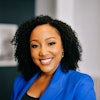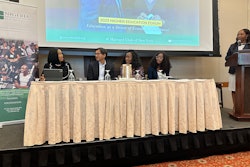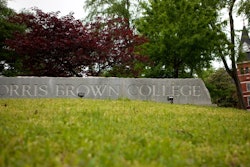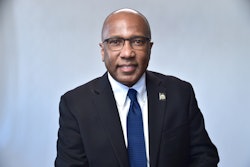In the United States and Mexico, private, for-profit institutions clearly seem to possess an appeal for a growing number of underserved individuals, particularly women, minorities and older students. Scholars say the reasons students are drawn vary, from the targeted marketing to the quick access credentials from the schools provide to jobs.
“The issue of diversity and access is really important,” said Dr. Kevin Kinser, an associate professor in the department of educational administration and policy studies at the University of Albany, who spoke about the growth of private higher education at the recently concluded 52nd Annual Conference of the Comparative & International Education Society at Teachers College of Columbia University in New York.
He acknowledged that the research into this subject is just beginning to take shape. “More attention needs to come to this notion of what it is that for-profits are doing that is attractive to minority populations,” Kinser said. “One explanation is that they tend to locate their campuses in urban environments or in areas which are more accessible to minority populations.
“I don’t think that explains the whole thing,” he added. “They really do target students and I’d love to see the data on this. They’ve recognized a need. I would love to see the numbers to find out what percentage of these students in the for-profit sector have tried community colleges and local public colleges and were not successful. Maybe they got lost in the crowd or they’re first generation and didn’t understand what to do. For-profits are much smaller institutions. Maybe that personal contact and attention is quite important for these students.”
Over the past decade there has been substantial growth in Mexico in this private sector. Dr. Juan Carlos Silas, a professor at the Universidad de Monterrey, said 33.1 percent of students in four-year programs and 45.5 percent of those pursuing graduate education are attending what he called demand-absorbing institutions.
Financial constraints prevent public institutions from enhancing their intake of qualified students. Silas, who directs the Interdisciplinary Center for the Study of Quality of Education and Eradication of Poverty, said thus far his research shows that student choices are driven by access to the job market, and they choose programs related to the more dynamic sectors of the economy such as business, communications and services.
“They’re not choosing based on the quality of learning,” he said. “They’re looking for a licensed institution that provides the appropriate credentials for joining the job market at an affordable price.”
Leaders at public institutions in Mexico have said it is not their responsibility to ensure jobs. Silas said he is concerned that state authorities seem not to have demand-absorbing institutions on their radar. There is no meaningful dialogue taking place.
“Demand-absorbing institutions play a real role in providing access to higher education for students who couldn’t or wouldn’t attend public institutions or elite private institutions,” Silas said. His ongoing research involves trying to get more insight into the working of these institutions. “My main topic is trying to understand the rationalities of the issue and the decision-making of the students.”
Kinser noted that enrollment doubled at for-profit U.S. institutions from 1996 to 2006. Across the varied types of schools, women and minorities are an unquestionable factor. His data also show that individuals under the age of 25 are more drawn to public and nonprofit institutions, but those over 25 are being drawn to private institutions. Money seems to be a factor in a variety of ways, including access to financial aid, he said. The financial model for private institutions depends on public subsidies. Job access is also a factor, the main factor in trade schools and other job-related training.
Education experts often quickly dismiss private, for-profit institutions as fly-by-night or rip-offs. While some are, Kinser said many are not. “Since the money the for-profits make is directly related to the students coming and staying, they have a very strong incentive to provide the academic advising and support that really does assist the students and continuing enrollment to graduation,” Kinser said.
Dr. Daniel C. Levy of the University of Albany said there is a lot of ambiguity in what higher education is and going forward there should be more differentiation in discussing the various types of schools. “Evidence suggests students are making informed decisions,” he said. “Consumers are better informed than public officials portray them.”
Kinser said in the United States, unlike in Mexico, public institutions seem to be responding lately to the growth of underrepresented students at for-profit schools by investigating how public institutions might better attract and meet the needs of those students. “They’ve become aware that this is an issue that the public sector can address,” he said. “We don’t have good data on why students are choosing schools.” Most research has involved 18-year-old high school seniors. Going forward, Kinser said he hopes to see more analysis of the needs of underserved populations.
Click here to post and read comments
© Copyright 2005 by DiverseEducation.com





















